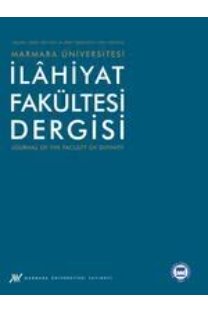EL-İSTİRATİCİYYAT ELLETİ YESTEHDİMUHA'T-TALEBETÜ'L-ECANİB ED-DARİSUNE LİLUĞATİ'L-ARABİYYE KELUĞATİN SANİYETİN Fİ MERKEZİ'L-LUĞÂT Fİ'L-CAMİATİ'L-ÜRDÜNİYYE(Ürdün Üniversitesi Dil Merkezi’nde İkinci Dil Olarak Arapça Öğreniminde Yabancı Öğrenciler Tarafından
Bu makaleye konu olan inceleme, ikinci bir dil olarak Arapça öğrenen farklı kültürel arkaplanasahip öğrencilerin kullandığı kendi öğrenme yöntemlerinin ne tür değişiklikler arzettiğini ortayakoymayı amaçlamaktadır. Bu maksatla araştırma, Ürdün Üniversitesi Dil Merkezi’nde ikincidil olarak Arapça öğrenen dil düzeyi altıncı kur seviyesindeki 154 öğrenci üzerine uygulanmış birçalışmayı kendisine konu edinmiş; öğrencilerin kendi dil öğrenme yöntemlerinin sahip olduklarıkültürel arkaplana göre ne tür değişiklikler arzettiğini incelemek amacıyla yapılmıştır. Sonuç olarakaraştırma, öğrenciler tarafından kullanılan yöntemlerin derecelerindeki farklılaşmaya dair birtakım delilleri ortaya çıkarmıştır. Bir yandan hafıza, biliş-ötesi ve duyuşsal yöntemler bazı öğrencilertarafından sıklıkla kullanılmış iken öte yandan bilişsel, dengeleme ve sosyal stratejilerin kullanımı,bazı ülkelerde daha yüksek olmuştur. Nihayetinde görüşmelerde elde edilen data, öğrenme kültüründekifarklılıklardan kaynaklanan dil öğrenme yöntemlerindeki farklılaşmayı göstermektedir.Anahtar Kelimeler: İkinci Dil, Yabancı Öğrenciler, YöntemlerThe Strategies that are used by Foreign Students Studying Arabic as a Second Language at theLanguage Center at the University of Jordan, Students of the Sixth Level as a SampleAbstract: The study tries to focus on how the students from different cultural backgrounds learnArabic language as a second language using their language learning strategies. Thus, a research wascarried out involving a sample of 154 sixth level students at the Language Center at the Universityof Jordan learning Arabic as a Second Language. The research was designed to investigate thestudents’ language learning strategy differences from the perspective of their cultural backgrounds.This research reveals some evidence of the differences in the degree of strategies used by the students.On the one hand, memory, meta-cognitive, and affective strategies were more frequentlyused by some of the students. On the other hand, the use of cognitive, compensation, and socialstrategies are higher in some of the countries than others. The data gathered from the interviewshows differences in language learning strategies due to differences in their learning culture.Keyword: Second language, foreign students, strategies.
Anahtar Kelimeler:
İkinci Dil, Yabancı Öğrenciler, Yöntemler
-
The study tries to focus on how the students from different cultural backgrounds learn Arabic language as a second language using their language learning strategies. Thus, a research was carried out involving a sample of 154 sixth level students at the Language Center at the University of Jordan learning Arabic as a Second Language. The research was designed to investigate the students’ language learning strategy differences from the perspective of their cultural backgrounds. This research reveals some evidence of the differences in the degree of strategies used by the students. On the one hand, memory, meta-cognitive, and affective strategies were more frequently used by some of the students. On the other hand, the use of cognitive, compensation, and social strategies are higher in some of the countries than others. The data gathered from the interview shows differences in language learning strategies due to differences in their learning culture.
Keywords:
Second language, foreign students, strategies.,
- ISSN: 1302-4973
- Başlangıç: 1963
- Yayıncı: Marmara Üniversitesi
Sayıdaki Diğer Makaleler
Ebû İshâk en-Nazzâm Örneği Üzerinden Kelâm-Bilim İlişkisi
Josef ESS, Josef Van ESS, Mehmet BULĞEN
Aksâmu’l-Kur’ân 89/Fecr, 1-14. Âyetleri Örneğinde Yemin İfadelerinin Anlaşılması ve Tercüme Edilmesi
Hattat-Şâir Abdülkadir Efendi’nin Arınâme’si
NAZARİYYETÜ'T-TE'SÎR Fİ'L-İLLE İNDE'L-HANEFİYYE (Hanefilere göre (İllet’te) te’sir teorisi.)
Matürîdî Kelamcı Şemsüddîn es-Semerkandî’nin Hıristiyanlık Eleştirisi
Kural Dışı Dini Bir Yönelim Olarak Çağdaş Tekfir İdeolojisini Anlamak
Batı’da Hadis Üzerine Yapılan Çalışmalar ve Temel Yaklaşlımlar
Ebû Hâşim’in Ahvâl Teorisi: Yapısı ve İşlevi
RICHARD FRANK, Richard M. FRANK, HAYRETTİN GÜDEKLİ, Hayrettin Nebi GÜDEKLİ
